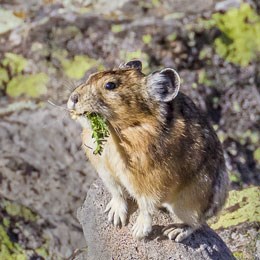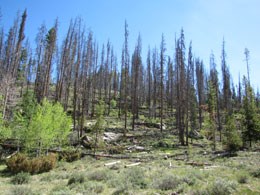
NPS 
NPS/Ann Schonlau Climate is a driving force in what you experience at Rocky Mountain National Park. Snowcapped peaks, swelling rivers, industrious beavers, and delicate alpine flowers all thrive in the long-term pattern of weather conditions that make up the park's climate. As the climate changes, park managers anticipate new challenges for the preservation of park landscapes and resources. It is getting warmer (a 3.4° F rise in average annual temperature over the last century) in Rocky Mountain National Park. What does it mean to see a 3.4° F rise in average temperature? Imagine climate change is like a fever – if your temperature went up 3.4° F, you would feel sick. Warming in Rocky Mountain National Park can similarly affect the park's natural resources. 
What a changing climate means for Rocky Mountain National Park
A warming climate means shorter, milder winters and longer, warmer summers, which can affect the park's unique landscapes, plants and animals. Some observed and expected changes include:
The National Park Service and its partners are working to understand how climate change will affect the park's natural resources, infrastructure, and your visitor experience now and into the future. To find out more and get involved, ask a ranger or visit the NPS Climate Change website.

NPS Get involved!It's amazing how much impact one small action can make, when it's performed by many people. Buy local products that are sourced and manufactured in environmentally friendly ways to influence economic practices. Reduce, reuse, and recycle your products and waste. Carpool or use public transportation. Challenge yourself to reduce your energy consumption by 10 percent this year. Here are more tips on how to make a difference.
|
Last updated: May 7, 2018
